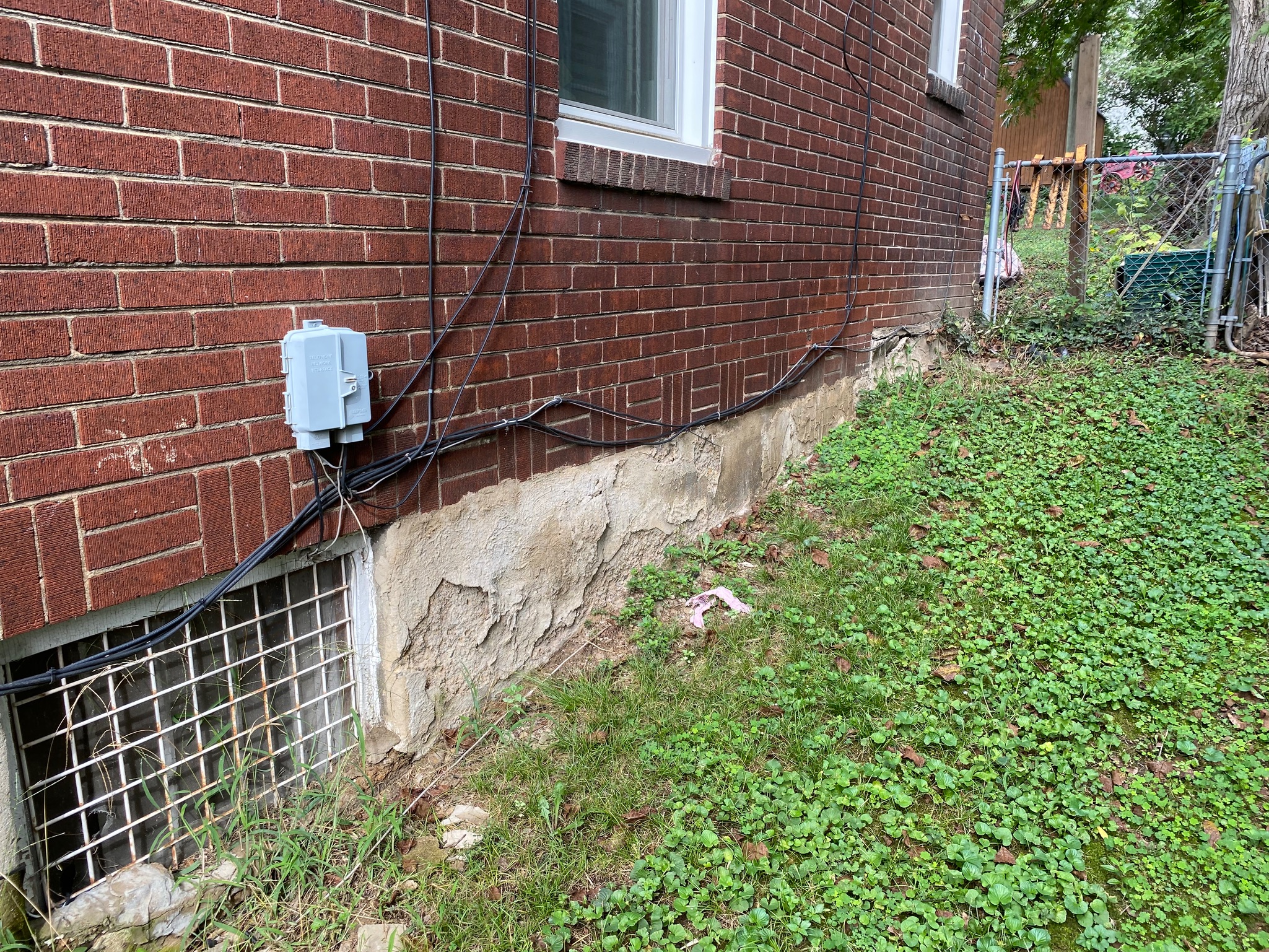
From crisp autumn mornings to heavy spring rains, the changing seasons bring beauty and renewal. But while you enjoy these transformations, your home’s foundation experiences a different story—one filled with stress, shifting, and sometimes, silent damage.
Seasonal soil movement is one of the most underestimated threats to foundation stability. What feels like harmless rain or a dry summer can set off a chain reaction beneath your home, causing cracks, settlement, and even structural failure over time.
Understanding how different weather patterns impact the soil supporting your foundation is crucial for proactive homeowners. In this article, we’ll break down the science behind seasonal soil movement, common warning signs, and the essential steps to protect your home year-round.
🔑 Key Takeaways
- Seasonal weather cycles cause soil expansion, contraction, and erosion, impacting foundation stability.
- Cracks, uneven floors, and sticking doors often appear after seasonal shifts.
- Clay soils are especially vulnerable to moisture-driven expansion and shrinkage.
- Solutions include proper drainage, soil moisture control, and professional foundation reinforcement.
- Regular inspections help detect and address seasonal damage early.
The Science Behind Seasonal Soil Movement
The soil beneath your foundation is not static—it breathes and changes throughout the year. Different weather patterns affect soil moisture levels, density, and load-bearing capacity.
Spring and Summer: The Wet Season
During heavy rains or rapid snowmelt, the soil becomes saturated. Especially in clay-rich regions, this excess water causes soil to expand and push against the foundation walls. The increased hydrostatic pressure can force moisture into small cracks and create new ones, leading to leaks and structural strain.
Late Summer and Fall: The Dry Season
As temperatures rise and rainfall decreases, soils—particularly clay—lose moisture and shrink. This contraction causes voids beneath the foundation, leading to uneven settlement and cracks in walls, floors, and ceilings.
Winter: The Freeze-Thaw Cycle
In colder climates, water in the soil freezes and expands. This expansion pushes against foundation walls and footings. When temperatures rise and the soil thaws, it contracts again, causing instability and possible shifting. Repeated freeze-thaw cycles intensify stress on your foundation year after year.
Why Soil Type Matters
The way soil reacts to seasonal changes depends heavily on its composition:
| Soil Type | Seasonal Behavior | Impact on Foundation |
|---|---|---|
| Clay | Expands when wet, shrinks when dry | Major risk of movement and settlement |
| Silt | Holds moisture, prone to compaction | Moderate settlement risk |
| Sand | Drains quickly, stable | Lower expansion but can erode easily |
| Peat | Compresses easily, poor support | High settlement and instability |
Homes built on expansive clay soils face the greatest risks during seasonal changes.
Common Signs of Seasonal Foundation Movement
While many homeowners only inspect their foundation after a major event, subtle seasonal signs often appear first.
Visible Cracks
- New or widening cracks in basement walls, exterior bricks, or interior drywall.
- Horizontal cracks indicate pressure from expanding soil.
- Vertical or stair-step cracks suggest settlement from soil contraction.
Uneven or Sloping Floors
When soil beneath the foundation shifts, it can cause portions of the home to sink unevenly, resulting in sloping floors.
Sticking Doors and Windows
As the foundation settles or shifts, frames become distorted. You may notice doors or windows that no longer open or close properly.
Gaps Between Walls and Ceilings
These separations often appear after significant seasonal soil movement, revealing foundation stress.
Basement Water Intrusion
New leaks or damp spots in your basement after heavy rains suggest foundation movement affecting waterproofing integrity.
The Risks of Ignoring Seasonal Damage
While some homeowners believe small cracks or minor sticking doors are harmless, these seemingly small issues can escalate quickly.
Progressive Structural Damage
Over time, minor settlement or shifting can cause severe wall bowing, large cracks, and significant loss of structural support.
Increased Repair Costs
Addressing small cracks early is far more affordable than underpinning or full foundation replacement required for advanced damage.
Reduced Property Value
Foundation problems lower a home’s market appeal and value, and may discourage buyers during resale.
Mold and Moisture Issues
Foundation movement often compromises waterproofing, leading to leaks, mold growth, and health risks.
How to Protect Your Foundation from Seasonal Soil Movement
Thankfully, there are proactive measures you can take to mitigate seasonal impacts and extend the life of your foundation.
1. Improve Drainage Around Your Home
- Extend downspouts at least 10 feet away.
- Regrade the yard so water flows away from the foundation.
- Install French drains or curtain drains to redirect surface and groundwater.
2. Maintain Consistent Soil Moisture
Avoid extreme fluctuations by:
- Using soaker hoses during dry periods to keep soil moisture levels consistent.
- Avoiding overwatering, which can saturate and destabilize soil.
3. Install a Sump Pump System
A sump pump collects and expels groundwater before it can accumulate under the foundation, preventing hydrostatic pressure buildup.
4. Schedule Regular Foundation Inspections
A professional inspection every 1–2 years can detect early signs of seasonal movement, allowing for small fixes before major problems develop.
5. Reinforce Your Foundation
For homes at high risk (e.g., on expansive clay soils), installing pier systems (helical or push piers) can stabilize and support the foundation against seasonal shifts.
Real-Life Example: From Seasonal Cracks to Major Repairs
In Botetourt County, VA, a homeowner began noticing hairline cracks on their basement wall each spring. Initially, they dismissed the cracks as harmless seasonal settling. However, after several years, the cracks widened, floors sloped, and doors jammed.
A Seal-Tite inspection revealed that the home sat on clay soil with severe seasonal expansion and contraction. The solution included:
- Installing helical piers to stabilize and lift the foundation.
- Waterproofing basement walls to prevent moisture intrusion.
- Improving grading and installing new drainage systems.
The homeowner regretted not acting sooner, as early intervention would have saved significant repair costs and stress.
FAQs: Seasonal Soil Movement and Foundations
Do all foundations move with the seasons?
Most foundations experience minor seasonal movement, but severe shifting typically occurs on expansive soils or in areas with poor drainage.
Can watering my yard really prevent foundation damage?
Yes. Controlled watering helps maintain stable soil moisture, reducing extreme contraction during dry periods.
Is it enough to just fill cracks each year?
No. Simply patching cracks treats the symptom, not the cause. Underlying soil movement must be addressed to prevent recurring damage.
Will adding trees help stabilize soil?
Strategically placed vegetation can help control soil moisture, but large trees too close to the foundation may exacerbate soil drying and root-related issues.
How much does foundation stabilization cost?
Costs vary depending on the severity. Minor repairs may cost $500–$1,500, while pier installations can range from $5,000 to $15,000 or more.
Conclusion: Stay One Step Ahead of the Seasons
Each season brings new beauty—and new challenges for your foundation. From expanding clay in spring to shrinking soil in summer and freeze-thaw cycles in winter, your home endures a constant tug-of-war beneath its surface.
The key to protecting your home lies in understanding and addressing these seasonal soil movements proactively. With smart drainage, consistent soil moisture, professional inspections, and timely repairs, you can keep small shifts from becoming structural nightmares.
If you’ve noticed cracks, sloping floors, or sticking doors after seasonal changes, don’t wait for the problem to worsen. Contact Seal-Tite Basement Waterproofing for a comprehensive foundation evaluation. Our team can help you develop a personalized protection and repair plan to keep your foundation strong, no matter what the seasons bring.

Seal-tite Basement Waterproofing Co. is a full service basement environment contractor. We carry an A+ Better Business Bureau rating. We repaired over 40,000 homes and structures in Virginia, West Virginia, Tennessee, and North Carolina. We are fully insured and licensed. We have worked in all types of locations, including residential and commercial locations, government agencies, colleges, hospitals, churches, and condo associations.
Seal-tite® offers a lifetime transferable warranty. We carry a Class A Contractor’s License and we are fully insured. Our satisfied customers range from government agencies to businesses, hospitals, colleges, churches, and thousands of homeowners. Your home is probably the single largest investment you will make in your lifetime. Don’t wait, call Seal-tite® to help make your home dry, safe and livable.

